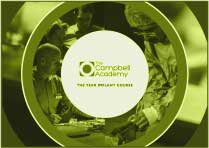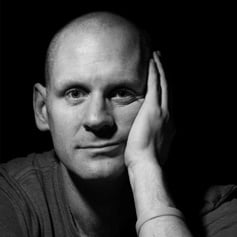
In 2014, soon after I became the sole owner, partner, and principal (whatever you call it) of The Campbell Clinic, we spent £250,000 on technology.
I bought a Sirona XG 3D CBCT machine, a full CEREC setup, a five-axis lab milling machine and a full lab ceramic setup.
All of that together was to tie in with the developing digital revolution, but personally, and for me, it was about guided surgery.
I was looking around the different systems to be able to use, but I wanted an integrated and seamless system that would allow me to produce in practice (because there wasn't really anybody in labs doing very much of that at that stage).
And so, it was that that year we were the first practice in the United Kingdom to use CEREC Guide 2 (we dabbled with CEREC Guide 1, but it was bat sh*t crazy with thermoplastic, so you had to heat and water and scan in the mouth, etc etc).
CEREC Guide Two was a clear CEREC block you milled in the CEREC machine after designing your implant in the Sirona software.
I knew that we were ahead of the curve when we did the first one, and we liked it. So, I asked Sirona if we could have some more blocks. They asked me how many we needed, and I said 50. They said they only had two in their warehouse and would have to ask the head office if they could get some more produced quickly.
We were right at the cutting edge of this.
Other people carried on with guided surgery after us and took it to higher levels or certainly spoke about it more, but we moved it along and used it within our practice ever since, and now it's day to day almost every day, and it's pretty routine.
I'm not suggesting we're the best exponents of guided surgery on the planet (I've met the guys who are), but we're pretty good at it, and our understanding is great.
But I was always waiting for the robots to come.
At City Hospital Nottingham at the moment, there are two-multimillion-pound robots which will happily remove your prostate in a procedure, which will mean you'll have to stay in the hospital overnight, whereas prior to that when the manual surgeon did it, it was up to two weeks.
They're taking prostates out and performing gynaecological surgery every single day.
How hard can it be for the robot to put an implant in?
If I had to choose right now to either have my prostate out by a robot or an implant placed by a robot, there is no question that the implant would be on its way in.
And so, we moved from static surgery, like guided surgery through a surgical guide, to the potential of navigational surgery, which is non-static.
This means that your drill is calibrated in a specific way that allows you to move your drill with guides on computer screens to put your implant into its planned position.
On Friday, in the academy space at the Clinic, we were able to start to use Straumann's new device, called Falcon.
Falcon is actually a development of the mini Navident system (not Navident, that's different) and will be rolling out to the shelves later in 2024 and on from there.
Imagine that you have a standard handpiece, which has a slightly heavier, U-shaped piece of metal on the top where your thumb and forefinger separate.
You calibrate this and pop it into the mouth and then watch the screen like a computer game (think Luke Skywalker trying to destroy the Death Star in the first ever Star Wars movie) in place.
You then also, after you have finished preparing the site, get a real-time report on exactly how close you are to where you intended to be in the first place.
Make no mistake, there is significant continued development to happen here, but I have watched guided surgery and navigational surgery for almost a decade, and it's only now that I feel that we are in a position to take this forward.
It will have an extraordinary impact on the way we teach more complex cases to our delegates in the Clinic.
It will have an extraordinary impact on our quality assurance and how good and satisfactory our implant placements are.
It will have an extraordinary impact on how we talk to our patients about the work that we do, how sophisticated we are and how much attention to detail we take.
It is, I believe, nothing short of revolutionary in our practice and our education offering.
I did not expect I would be saying that when we booked the demonstration a few weeks ago.
As I type this, Straumann has a launch day for Falcon in Gatwick, which we couldn't go to (we're really grateful that they brought it up to us yesterday).
But none of us who watched or interacted with that were disappointed, and none of us felt that it was something that we should pass over at this stage and not be on the bus early on so that we could figure this out as quickly as possible before the next iteration and the next iteration and the next iteration comes along.
Five years from now, navigational implant surgery will likely be like guided surgery is now; some guys will do it, and some guys won't, but it will be here to stay.
It's not going anywhere, and what comes next from this will be extraordinary.
We look forward to presenting you with some of the cases that we're doing with this in the near future.
Blog Post Number - 3631





Leave a comment